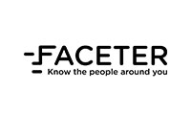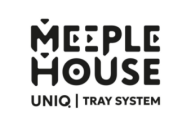Information on certain features of interpretation of the criteria of Howey Test
Information on certain features of interpretation of the criteria of Howey Test

To date, Howey Test is one of the key steps in the process of preparation forICO.
Undergoing this test is necessary in those cases when the project organizers intend to raise funds from investors fromthe USA, or the project itself is planned to be conducted in the USA.
Being developed by the US Supreme Court in the SEC v. Howey case, the test allows to establish a link between a financial transaction and an investment contract as a type of security.
It should also be noted that the investment contract according to the opinion of the US Supreme Court is one of the unstable mechanisms "within which the investor allocates funds in such a manner as to ensure income or profit from their operation".
For ICO purposes, the test allows to determine the legal nature of token.
In particular, a token is recognized as a security if it meets four key test parameters:
- Investment activity;
- Investment is carried out in a common enterprise;
- Investor sets sights on gaining profit;
- The profit depends on the actions of other persons.
At the same time, the following refer to the security and are understood as the security in accordance with the provisions of the Securities Act of 1933, namely: promissory notes/bills of exchange, shares, own shares/treasury shares, stock futures, securities swaps, bonds, debentures, temporary certificates, receipts/acquittances, guarantees, certificates, subscription rights and so on.
In addition, in practice, there are general principles of project implementation that affect the attribution of tokens to securities in accordance with Howey Test.
In particular, within the framework of Howey Test, considerable attention is paid to the nature of the project's progress and promotion, and the means selected and applied by the organizers to attract investors' interest.
If, in the context of ICO, the purchase of tokens is characterized by the term "investment" and also provides for "profit", then in most cases the regulator will have no doubt that the token is the security. Moreover, availability of investment activity can also be presumed in the case when the price is set for each individual token.
It should be noted that expectation of profit is one of the most significant criteria for referring a token to securities. At the same time, the contentthat the organizers of ICO insertin the notion of profit is of fundamental importance.
If obtaining material benefits from the project is the result of the investor's actions, then the token can not be recognized as a security. The investor's actions aimed at obtaining profit from the project, in turn, are the result of enforcement of own rights, which should be provided as a primary interest for the purchase of tokens.
In our opinion, legal nature of the token does not depend on the fact at the which stage of implementation of the project the funds were raised. In other words, the sale of tokens before the launch of the project itself is more resemble transferring the right to use in the future rather than investing in securities.
The key criterion in this case is not the moment in time associated with the start of the sale of tokens, but the ability of the person who acquired them to use the system for their own purposes to receive profit through own actions.
Moreover, increase in the value of tokens in the secondary market also does not indicate that they have the status of securities. The value of the token can grow, as well as the value of the right to a franchise increases due to the active actions of its holders.
One of the most contentious issues within Howey Test is the investor's voting right in the process of carrying out joint control over the development of the project, which, in the opinion of a number of experts, entails the recognition of the token as a security.
At the same time, in practice, the nature of the aforementioned right is of decisive importance.
We believe that if the holders of the tokenstake an active part in the operation of the system along with the enforcement of the voting right, have broad powers to exercise control over the project, have sufficient experience and resources, and contribute to the project being implemented through their actions, the token can not be considered to be the securitywithin the meaning of Howey Test. This is evidenced by the existing judicial practice.
A wide discussion is also aroused by the question of the concept of a "common enterprise". At the same time, judicial practice is rather contradictory in nature, highlighting two main approaches.
The horizontal approach presupposes a connection exclusively between the profits of investors who have jointly invested in the project. In the sense of this approach, tokens are generally recognized as securities in a common enterprise.
In turn, in accordance with the vertical approach, the profits of investors and project organizers are inextricably connected, and the link between investors' profits is not assumed. As it seems, the model of tokens in this approach is decentralized, which means that they can not be recognized as existing within the framework of a common enterprise.





























































